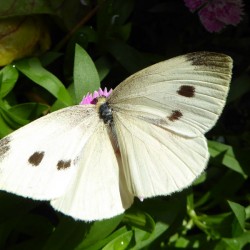Cabbage butterfly
This 5 cm large butterfly is a common sight in the garden. It has white wings with black tips and dots. There are several species of cabbage butterfly that look and behave very similar. Other names of those butterflies are large white butterfly or small white or simply white butterfly depending on the species. The [more]



